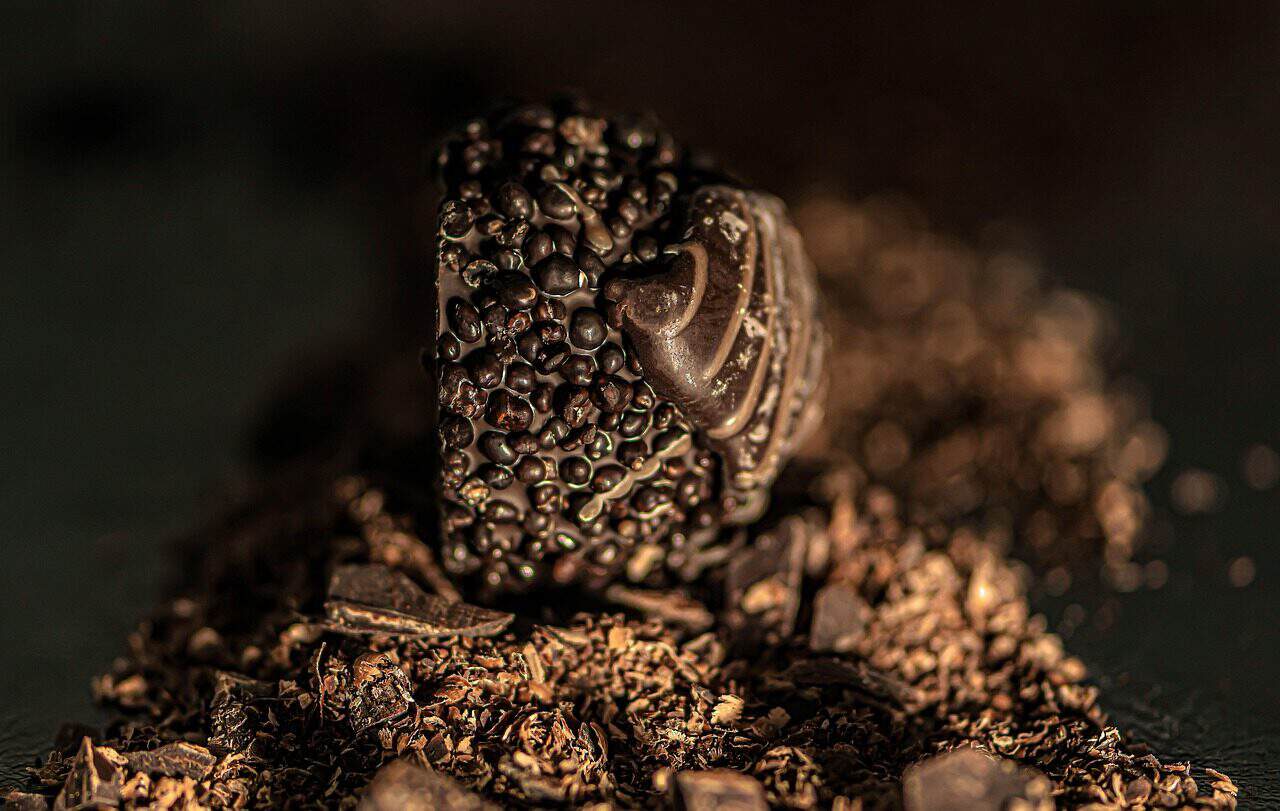A superfície dos biscoitos varia de cor devido a mudanças físicas e químicas. Quando a umidade é removida da massa, a temperatura da superfície aumenta rapidamente. Quando a superfície atinge cerca de 150degC, a cor muda. A A massa passa então por um processo conhecida como caramelização, uma reação não enzimática de escurecimento. É a quebra de açúcares em altas temperaturas que leva ao desenvolvimento da cor e do sabor.
Pão quimicamente fermentado
Em uma fábrica, são usados produtos químicos para criar massas de consistência uniforme. Essas massas são então enroladas e passadas por um série de rolos para criar um contorno. A pressão de estampagem ou os rolos de relevo cortam a forma desejada na folha. A massa de refugo é removida para reprocessamento. Usando pinos de encaixe, os desenhos podem ser impressos nos pedaços de massa. Os pinos ajudam a evitar o excesso de bolhas de gás enquanto a borda de corte penetra na massa.
Os produtos químicos usados para fermentação química podem vir em diversas formas e podem ser adquiridos no supermercado ou online. O fermento em pó é um exemplo de um tipo de fermento químico. Geralmente é composto de bicarbonato de sódio e creme de tártaro. Esses compostos têm ação extremamente rápida e começam a reagir com o líquido assim que são misturados aos ingredientes secos. Isso permite preparar um pão rápido.
Embora este ingrediente tenha sido descoberto pela primeira vez em 1959, foi somente na década de 1980 que os fabricantes de pão começaram a descobri-lo. Os cristais amarelos brilhantes que o ACA produz se decompõem em semicarbazida e uretano. O primeiro é considerado cancerígeno humano, enquanto o último não foi comprovado como prejudicial aos seres humanos. Este último, no entanto, tem sido associado à asma entre os trabalhadores fabris.
A principal diferença entre o pão fermentado quimicamente e os pães tradicionais está na forma como funcionam os dois processos. Os agentes químicos de fermentação são geralmente mais eficazes do que o fermento, pois proporcionam um crescimento mais rápido e um tempo de preparação mais curto. Eles também proporcionam uma melhor liberação de CO2 durante o cozimento, o que é essencial para uma estrutura bem-sucedida do miolo e bolsas de ar. Em última análise, esses fatores afetam o sabor, a cor e a textura do pão.
No pão industrial, o fermento é misturado a um líquido. Este líquido contém um gás e um líquido. O fermento converterá então o açúcar invertido em dextrose, que é a forma preferida para o pão. Outros agentes fermentadores também são utilizados, incluindo bicarbonato de potássio. Este modelo requer conhecimento dos coeficientes de interação de Pitzer. Roy et al. (2004) publicaram um estudo sobre este tema.
A função dos agentes no pão quimicamente fermentado é controversa. Isso levanta dúvidas sobre a eficácia do bicarbonato de amônio como agente fermentador. Além disso, a baixa proporção de NH3 na fase gasosa faz com que o gás de amônia escape do biscoitos e deixar os assados pão com manchas pretas ou marrons. Um cético pode questionar a eficácia desse modelo, mas o resultado final é o mesmo.
Um pão quimicamente fermentado é um produto de um agente de fermentação. O agente de fermentação aprimorado é revestido com uma camada lipídica. Essa camada lipídica protege o agente de fermentação química da água e da hidratação antes do cozimento. Entretanto, ela não impede que o pão cresça como resultado desse revestimento. Um pão fermentado quimicamente contém uma alta concentração de fermento.
A técnica de revestimento de leito fluidizado da técnica anterior proporciona um revestimento substancialmente contínuo. Entretanto, o revestimento contém uma alta porcentagem de agente fermentador, com apenas uma porcentagem mínima de agente de revestimento. Além disso, a técnica de revestimento anterior resulta em uma mancha marrom no produto assado. produto. Essa cobertura é muito protetora e deixa o pão muito quebradiço. Esse revestimento é um meio-termo entre segurança e sabor. No final, o produto final é quimicamente fermentado e não é adequado para o consumo humano.





